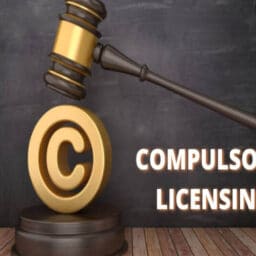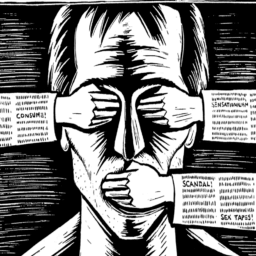Introduction
A maxim that best describes the Juvenile Justice system is the ‘Nil Novi Spectrum’ inferring that nothing is new on this planet. There prevails an assumption in the entire world for a long time that the juveniles ought to be managed in a lenient way on the grounds that there exists an arrangement of thought that says: young people for the most part have a propensity to react in prolonged frustration which goes with forceful and serious methodologies.
Usually, the word “child” signifies an individual who is below the age of 18 years and isn’t mature to comprehend right or wrong. The mindset behind committing a crime or the reasons for such crime is early-life encounters, way of upbringing, predominant masculinity, economic constraints, and so forth.
Claim of Juvenility
Currently, the penal laws of most nations have taken on the principle of ‘doli incapex’[1], which implies- realizing that the act they are perpetrating constitutes a crime.
The most debatable question among the legal organization and communists regarding this aspect is deciding about the “claim of juvenility”. A decision about such a claim has to be decided by the Juvenile Justice Board, before the commencement of court proceedings however such claim can be raised before Court at any phase of the conduct of proceedings or even after the matter has been disposed of by the Board. The Board needs to consider Rule 12 of the Juvenile Justice Rules, 2007 to decide the claim of juvenility.
The Supreme Court, in the case of Satbir Singh v. Territory of Haryana,[2] had said that with the end goal of determining whether or not the accused person comes under the purview of juvenile, the date of birth recorded in the school records will be considered by the Juvenile Justice Board.
Be that as it may, later the Supreme Court overruled its prior decision and held in the case of Arnit Das v. Territory of Bihar[3] that the consideration of date for deciding the ‘claim of juvenility’ ought to be the date on which the accused was brought before the competent authority.
Involvement of Youth
Youth is that part of one’s life when one is youthful particularly the period between childhood and entering into maturity. A portion of youth becomes associated with the juvenile justice system since they are blamed for perpetuating a criminal or delinquent act. Other youths come into contact because of committing certain status offences that are unlawful simply because of youth’s age—like delinquency, underage drinking, and fleeing from home. Not all of such cases, be that as it may, are officially handled through the courts. Youth have alluded to the juvenile justice framework for various sorts of offences.
Most of the youth processed through the juvenile court are generally adjudicated, i.e., declared to be delinquent by Judge, for most offences. Youth who are kept or detained might be dependent upon different negative conditions, including sexual or physical violence; depression; risk of committing suicide; and death etc.
Incidence of crime
Position in the UK: Firstly, Juvenile Courts were set up in England (under the Children Act,) in 1908. The essential duty of these courts includes giving legitimate consideration and security to children and youthful offenders and finding all of the vital ways to eliminate all unwanted environmental elements around the wrongdoers and to guarantee their reformation by training and providing schooling to them. There were a little more than 60,200 arrests of youngsters (of age 10-17 years) by the police in England and Wales. This has lowered down by 77% in the course of the past ten years, with an abatement of 5% somewhat recently. Black youngsters were more than four times more likely as compared to White children to be arrested.[4]
Position in America: The most usually perpetrated crimes by juveniles are peaceful misdemeanour offences. The widely common one is theft-larceny, which depicted a capture rate of 401.3 per 100,000 youths in the year 2016. Approximately 86,900 youth younger than the age of 21 years are kept or confined in detention centres, camps, ranches, and other such restorative foundations.[5]
Numerous young people who get involved with the juvenile justice system have encountered failure in the academic sphere, withdrawal from school, and additionally school disciplinary issues. Academic results for them are by and large negative in comparison to the youth who don’t come into contact with JJS.
Position in India: Under IPC, the minimum age at which any individual can be held liable for committing a crime is seven years.[6] The absolute number of kids arrested rose from 33,642 in the year 2009 to 38,685 after a period of 10 years, i.e., a 15% increase. Children within the age group of 16-18 years represent the greater part of youngsters arrested. Almost half of the kids had been arrested for offences like robbery, causing hurt, rioting and burglary.
- 65 to 70% of youth associated with the juvenile justice system have a diagnosable psychological health disorder and almost 30% of those experience serious mental health disorders.[7]
- While juvenile arrests have somewhat declined between the years 1994 and 2003, the arrest rate for drug abuse expanded. The expansion was far more noteworthy among female youth than males. Higher degrees of substance use increment the rate of offending, and the span of antisocial behaviour.[8]
Current Scenario
In the present day, after the Nirbhaya case[9], many individuals know that a different Justice System exists for juveniles. Many individuals are not yet mindful of how JJS exactly functions. After the Nirbhaya incident, society turned sentimental, emotional and communicated their hostile demeanour towards the judgment of the court. They requested a death sentence for the youngster engaged with the Nirbhaya case.
There was a roar in parliament and hence, the new law, i.e., Juvenile Justice Act 2015[10] was enacted in India. It is a complete arrangement for children affirmed and found to be in conflict with the law. It likewise deals with children needing care and security. This law is established by thinking about the Rights of the Child (CRC). Presently, this Act has been amended by The Juvenile Justice Amendment Act, 2021[11].
The factors that lead to the inclusion of youth with the juvenile justice system include:
- Trauma: Trauma felt at any point in life can adversely influence youth development engaged with such a system.
- Family: Family strains can make it hard for youth to build up an encouraging group of people to assist them with overcoming individual obstructions to success.
- Community-based Resources: Lack of community-based services, particularly in ruined, and frequently minority, communities might prompt JJS involvement.
- Abuse and Neglect: Child abuse and disregard increment the danger of arrest by 55%, and the danger of perpetrating a fierce crime by 96 %.[12]
- Substance Abuse: Many young people get engaged with JJS because of substance abuse or potentially facing mental health disorders.
Conclusion
As indicated by the constitutional spheres and international treaties, it is the obligation of the state to treat the youngsters with all delicateness, taking into purview the wellbeing of the kid. Nonetheless, there is a solid public demand for crueller punishment for youths who perpetrate serious offences, for instance, murder, assault, dacoit and so forth. Such youths ought to be punished like grown-ups.
Obviously, there is fiery rhetoric about crimes committed by youth and there is expanded public pessimism about the present Juvenile Justice system. Since the inception of our constitution, plenty of endeavours were made to comprehend such a system’s philosophy and in like manner, different laws had been enacted. Yet, all such endeavours are half-hearted and need genuine thought. Indeed, even society and the state need to find ways to prevent crime by youth and children.
Author(s) Name: Khushi Chopra (University Institute of Legal Studies, Panjab University Chandigarh)
References:
[1] Indian Penal Code 1860 s 82
[2] AIR 2005 SC 3549
[3] AIR 2000 SC 748
[4] EWCA Youth Justice Board Youth Justice Statistics 2018/19
[5] Office of Juvenile Justice and Delinquency Prevention, 2007
[6] Indian Penal Code 1860 s 83
[7] J. Cocozza, & K. Skowyra ‘Blueprint for change: A comprehensive model for the identification and treatment of youth with mental health needs in contact with the juvenile justice system’ (2007) Psychology 553
[8] D. W. Young, R. Dembo, & C.E. Henderson ‘A national survey of substance abuse treatment for juvenile offenders (2007) <https://psycnet.apa.org/record/2007-04972-007> accessed 07-11-2021
[9] Mukesh & Anr. v NCT Delhi (2017) 6 SCC 1
[10] The Juvenile Justice (Care and Protection of Children) Act, 2015
[11] The Juvenile Justice (Care and Protection of Children) Amendment Act, 2021
[12] Cathy Spatz Widom, Child Abuse, Neglect, And Adult Behavior (1989) 59/3 American Journal of Orthopsychiatry <https://onlinelibrary.wiley.com/doi/10.1111/j.1939-0025.1989.tb01671.x> accessed 07-11-2021
















